
This oddball little parklet must be a Henry Stern creation. On the eastern side of the triangle, you'll find four illustrated concrete tablets inscribed with the lyrics of the first stanza of "High Hopes".
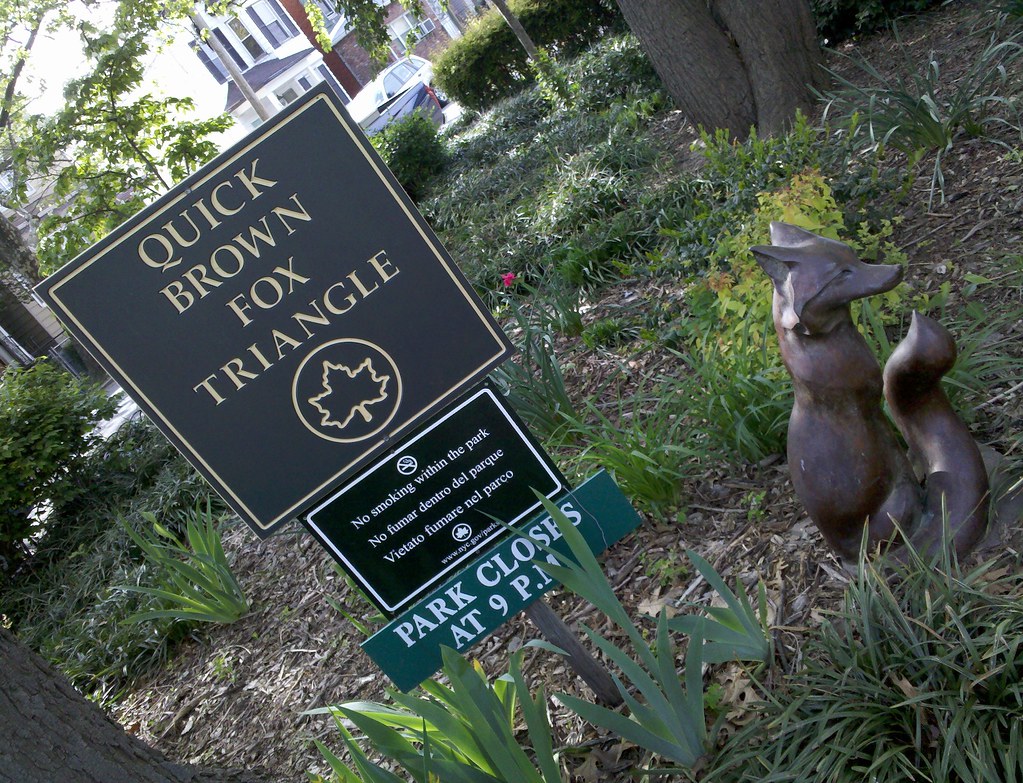
Then jump on over to Quick Brown Fox Triangle and complete the pangram!
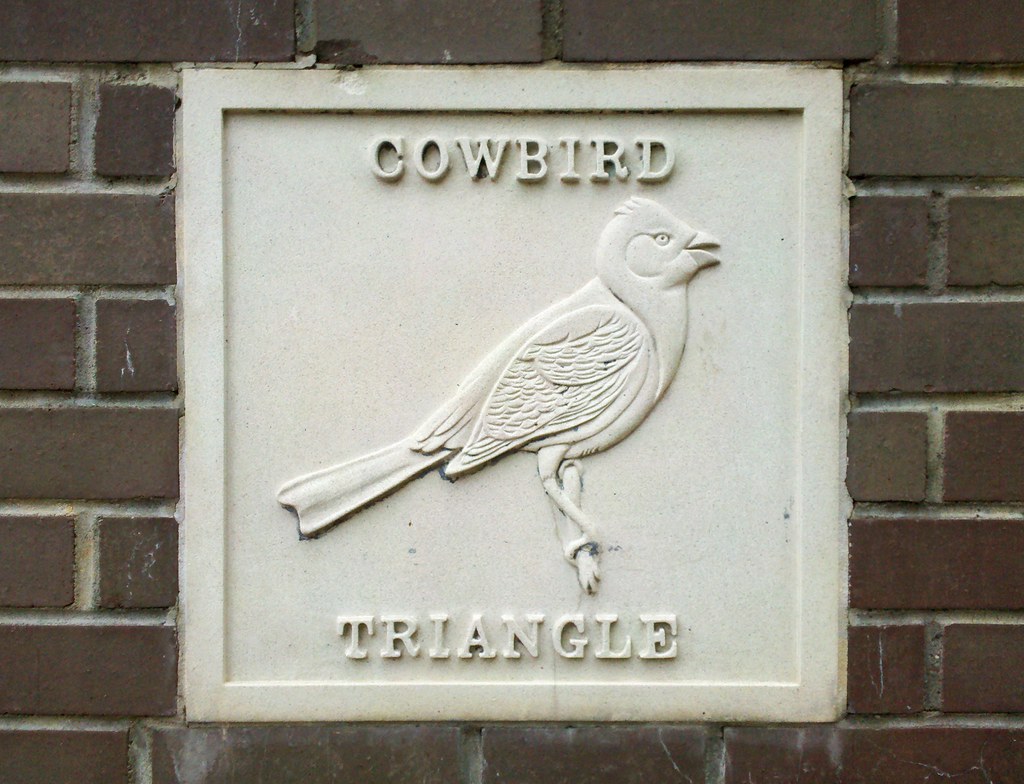
With the possible exception of "mafia behavior", the parasitic cowbird has no particular connection to the neighborhood of Maspeth, as far as I know; this little wedge of parkland was playfully named (by Henry Stern, of course) after two avenues adjacent to the triangle: Borden (namesake of the milk company) and Jay — hence the "cow" and the "bird".
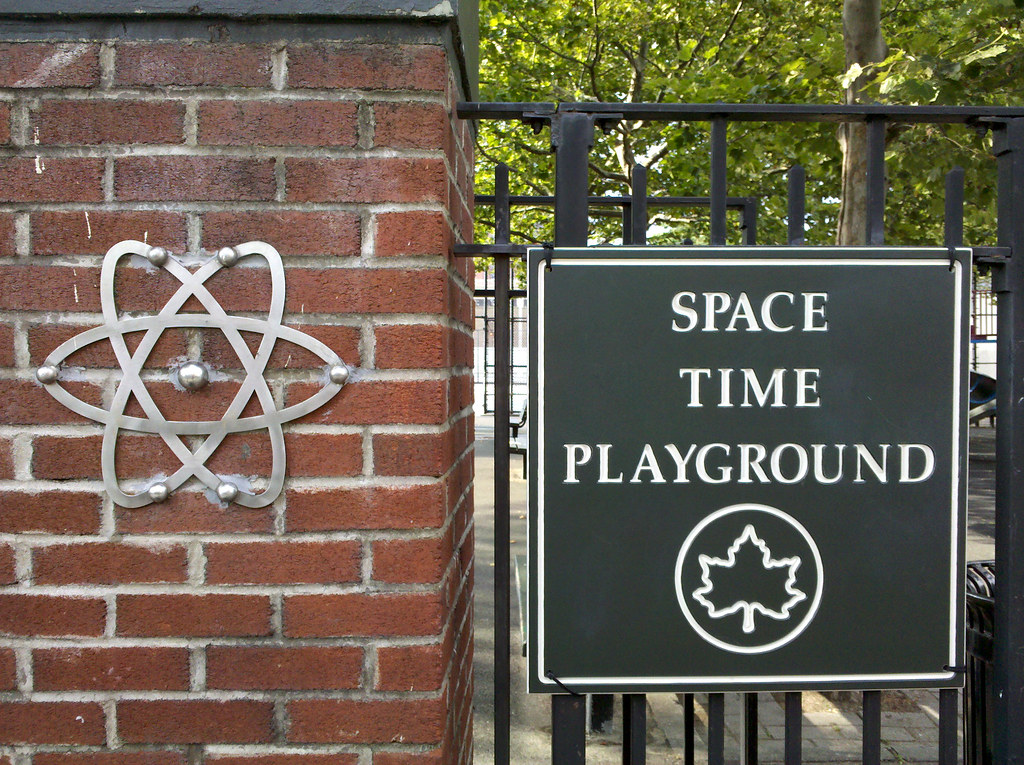
Built in conjunction with the adjacent Albert Einstein Junior High School. (One thing this walk has taught me: if a city park has a good name, it was probably bestowed upon it, as was this one, by Henry Stern.)
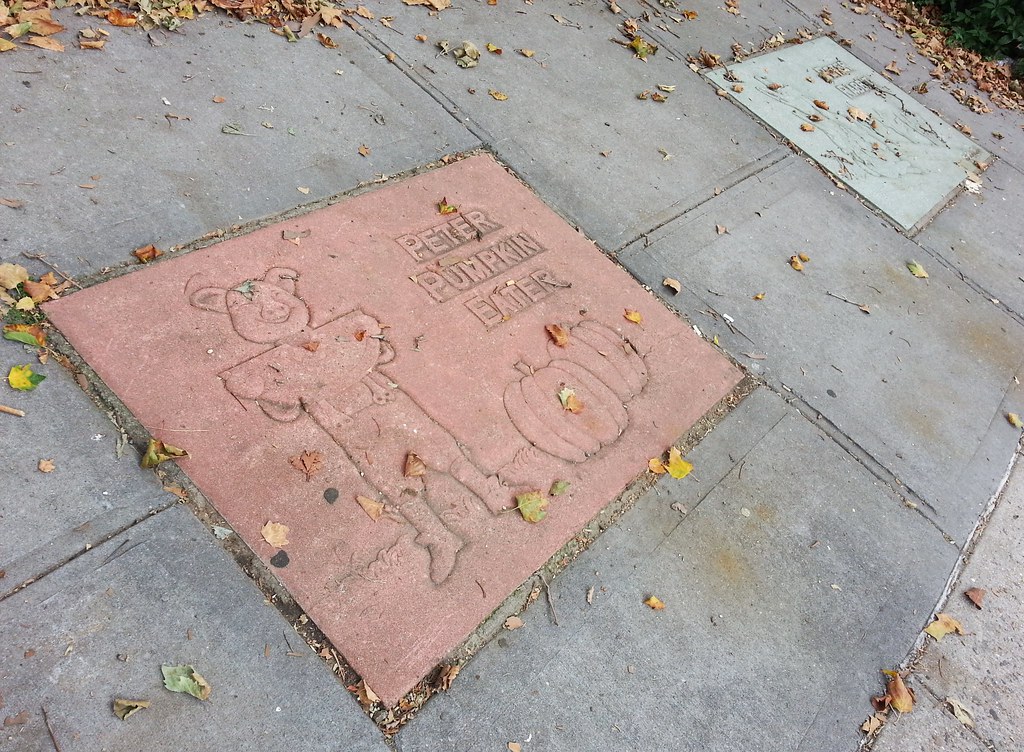
This playground honors two Peters, Stuyvesant and Cooper, for whom two nearby housing communities are named. I can only assume our old buddy Henry Stern is responsible for the goofy sidewalk plaques paying tribute to other notable Peters, like the two you see here.
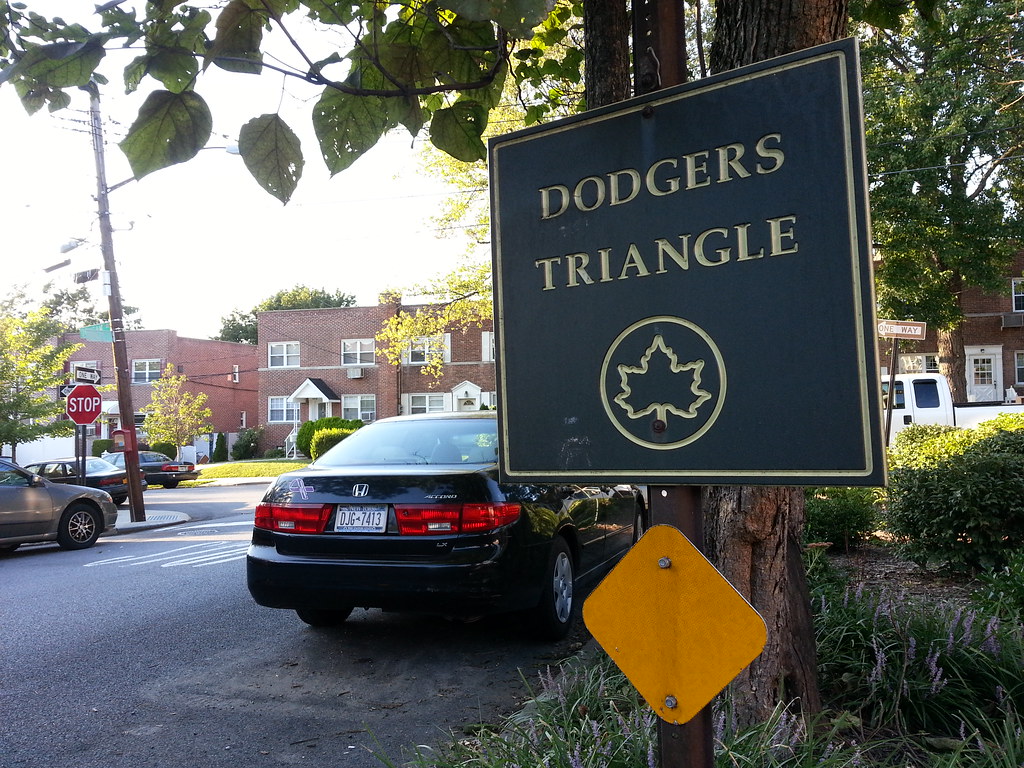
This little parklet is so named because it is bounded on one side by Hodges Avenue, which calls to mind — but otherwise bears no relation to — Dodgers legend Gil Hodges (whose grave we visited back in January). This sounds like a classic Henry Stern move; he similarly gave the name "Old Hickory" to a Long Island City park on Jackson Avenue, which is named for John C. — not Andrew — Jackson.
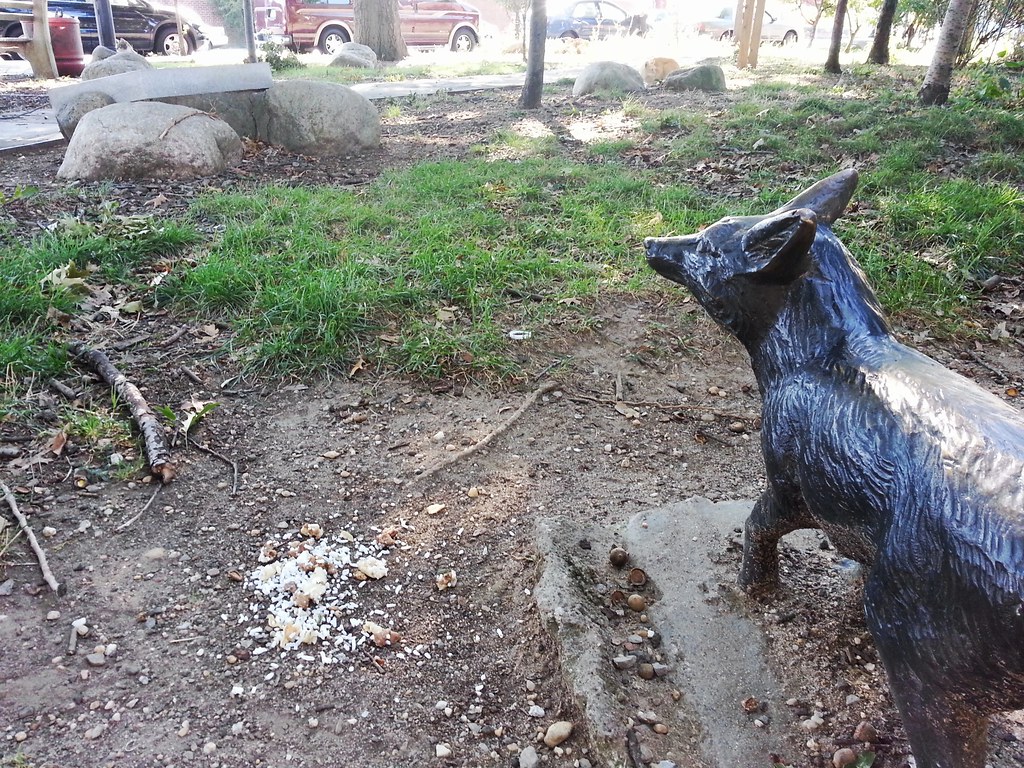
The eponymous canid of Quick Brown Fox Triangle* scopes out his potential competitors (there are two — can you find them?) before scarfing down his chicken and rice.
* Sound familiar? Strangely, there is a second park in Queens with the same name!
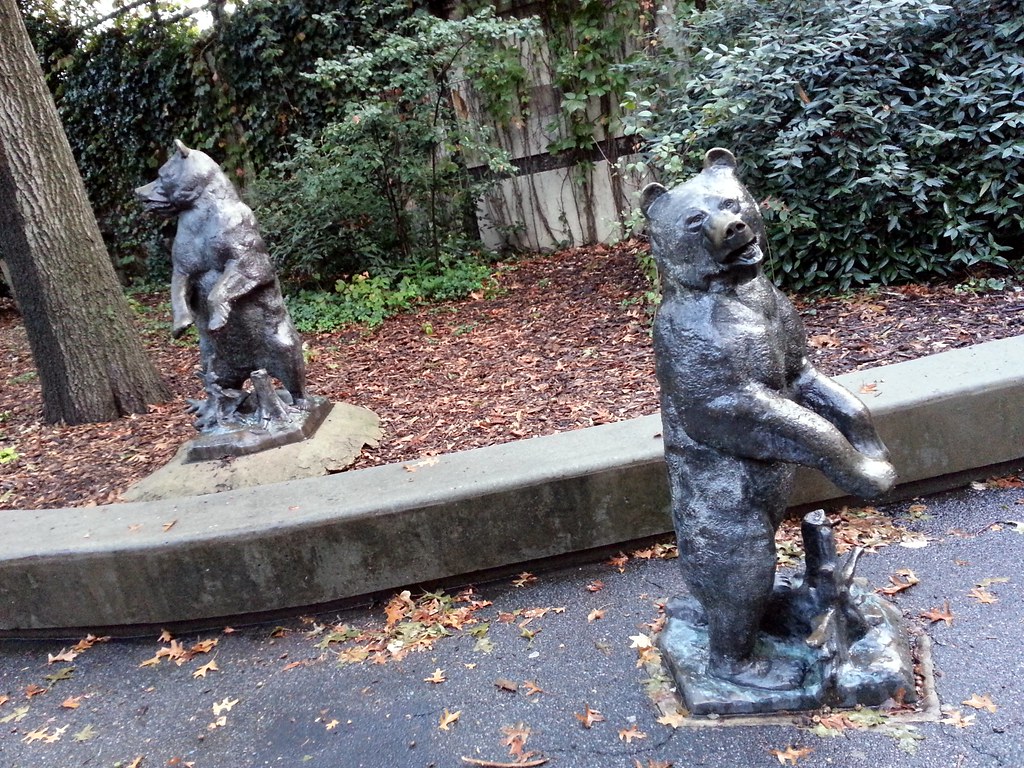
While these goofy dancing bears are an obvious sign of Henry Stern's influence, a more subtle trace of his unusual personality can be found in the very name of the park in which said bears are doing their frolicking. It was once known as Atlantic Playground, simply (and boringly) inheriting the name of an adjacent street: Atlantic Avenue. But, as we've learned, Mr. Stern was not a fan of straightforward, unimaginative appellations. As told on the Parks Department's website, here's the tortuous route he took to get to Palmetto:
Palmetto Playground’s nomenclature was inspired by the names of the surrounding streets: Atlantic Avenue, Columbia Place, and State Street. Columbia is the capitol of South Carolina, an Atlantic state, and the state tree is the Cabbage Palmetto, hence, Palmetto Playground.UPDATE: On May 3, 2013, Palmetto Playground was renamed Adam Yauch Park in honor of the late member of the Beastie Boys.
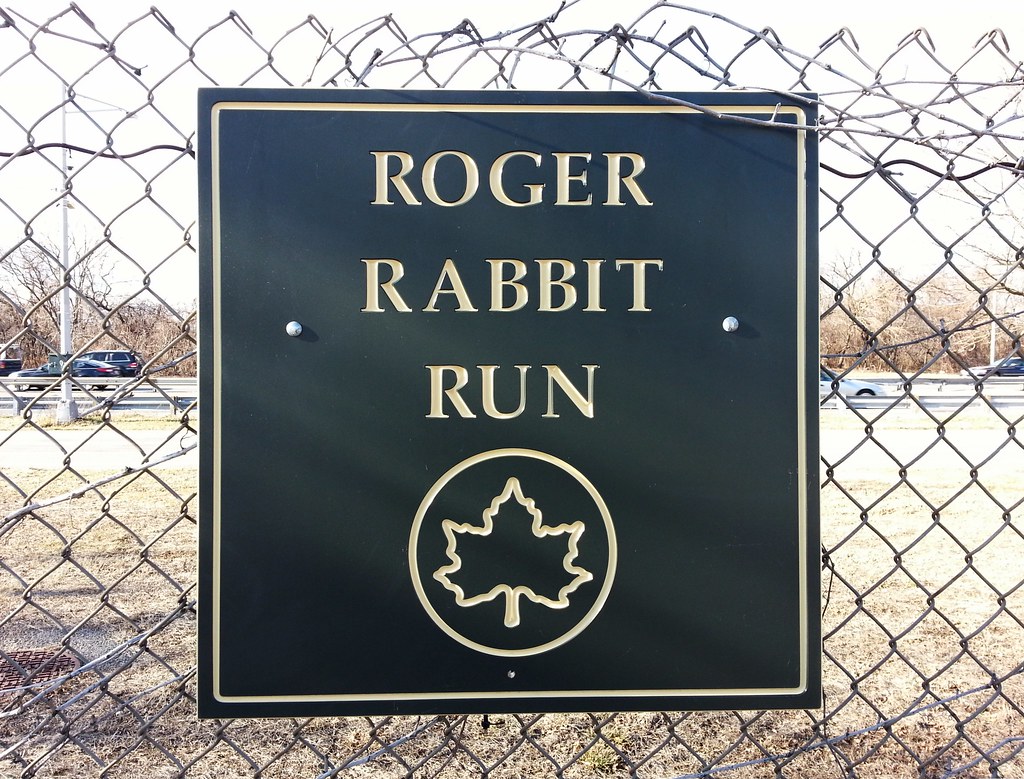
New York's parks are generally very well documented, but I can't find any information about the existence of this Sternish-sounding strip of grass and trees beside the Belt Parkway.
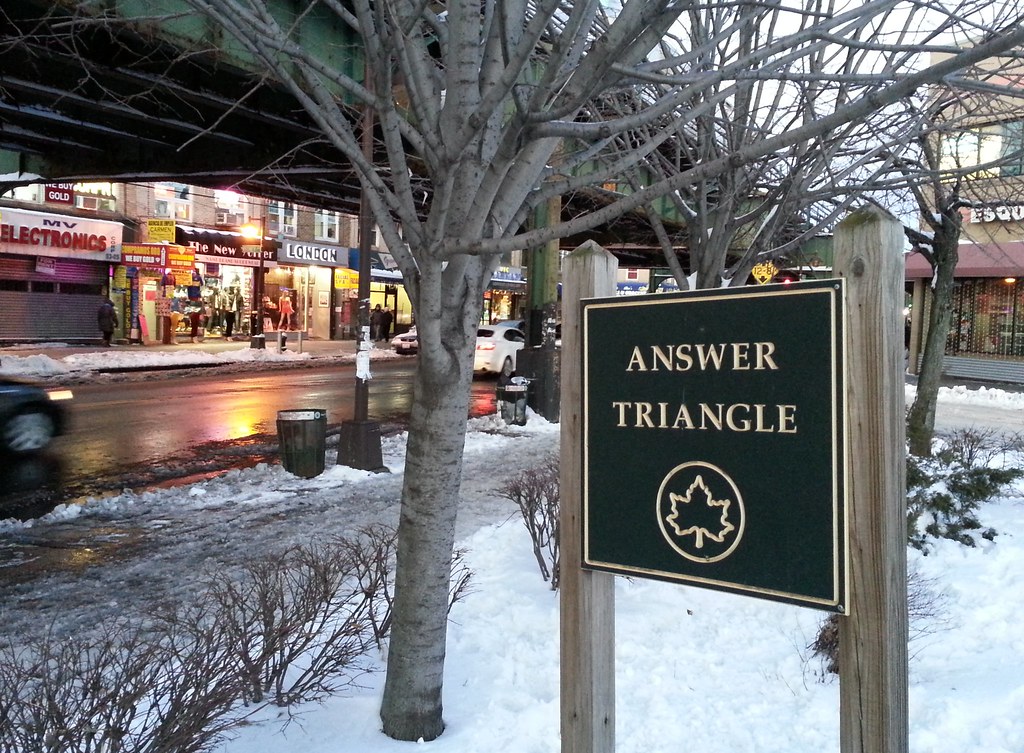
A classic Henry Stern park name. According to the Parks Department's website:
Answer Triangle draws its name from a play on words with the street on which it is located. The park is on Aske Street, and the response if one were to “ask(e)” a question is an “answer.”
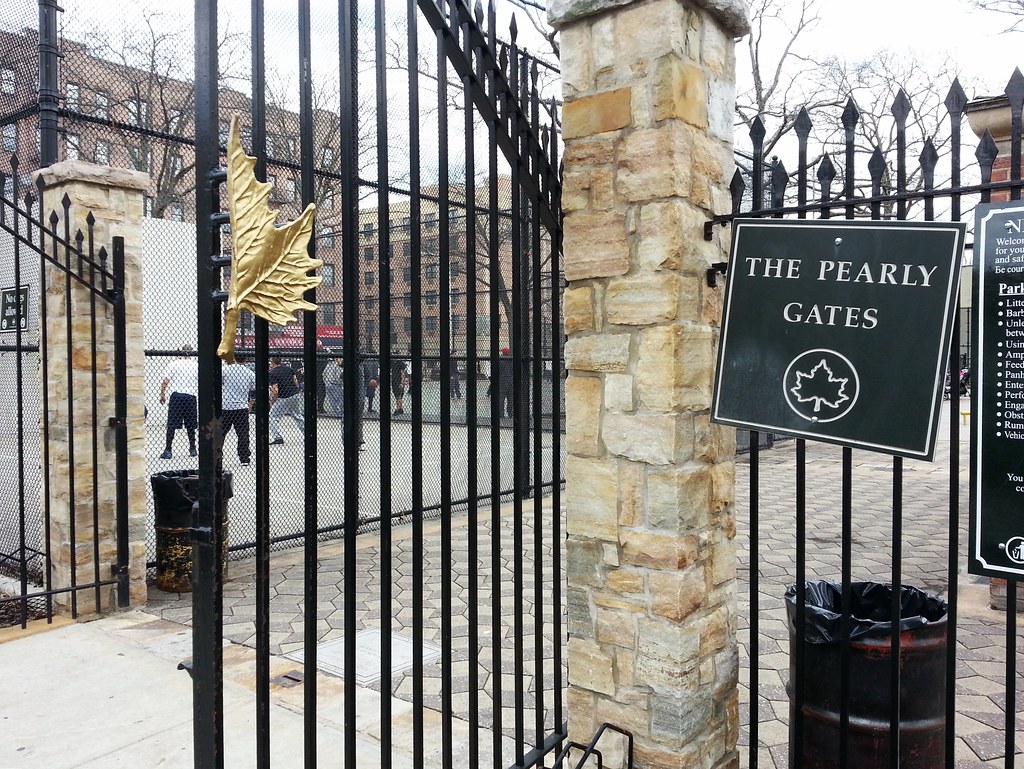
A playground on St. Peter's Avenue named — obviously — by Henry Stern
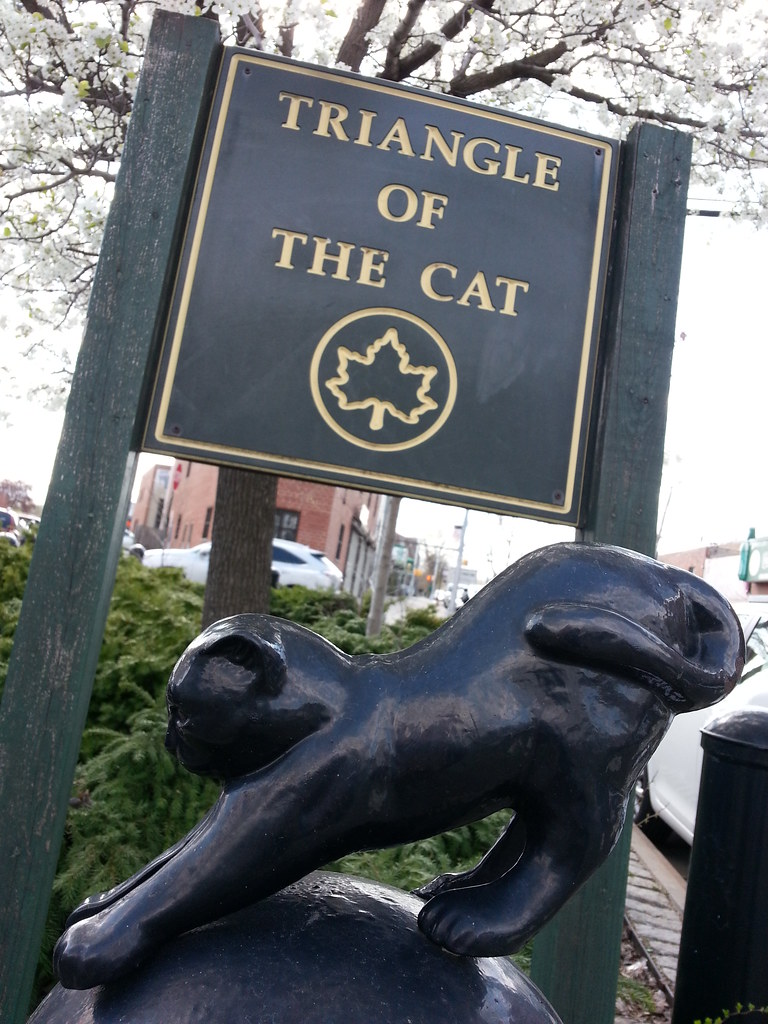
I can't find any information about this little parklet online, but I think it's safe to assume it was the work of Mr. Henry Stern.
UPDATE: It was indeed named by Mr. Stern (thanks, Gigi!), and for a very Sternish reason: one of the adjacent streets is Garfield Avenue.

In 2001, an NY Times reporter informed Henry Stern, the city's parks commissioner at the time, that the southern tip of Wards Island, in Wards Island Park, was labeled Negro Point on official nautical charts. Seeing the obscure name as unnecessarily offensive, Mr. Stern — known to be a fan of playful and unusual appellations — suggested to the US Board on Geographic Names that Negro Point be rechristened Scylla Point as a complement to Astoria Park's Charybdis Playground — named by Mr. Stern a few years earlier — which sits just on the other side of the turbulent and formerly very treacherous Hell Gate channel. (Scylla and Charybdis were mythical monsters who lived on either side of a narrow strait, making it very perilous for ships to pass through.)
The executive secretary of the board seemed receptive to the idea, but the latest NOAA nautical charts and USGS topo maps still say Negro Point (although Google Maps says Scylla Point). While Mr. Stern may have wielded no authority over federal map labels, he did have the power to name city parks and playgrounds just about anything he wanted; hence, I would imagine, the playground above, located just a few hundred yards from the disputed piece of land.

Located across the street from the "Wild Parrot Hot Spot" that is the Brooklyn College athletic field, this playground is appropriately decorated with parakeet silhouettes. (The zany name and animal art are clear signatures of former Parks Commissioner Henry Stern.)
P.S. Check out the crazy rules in effect here!
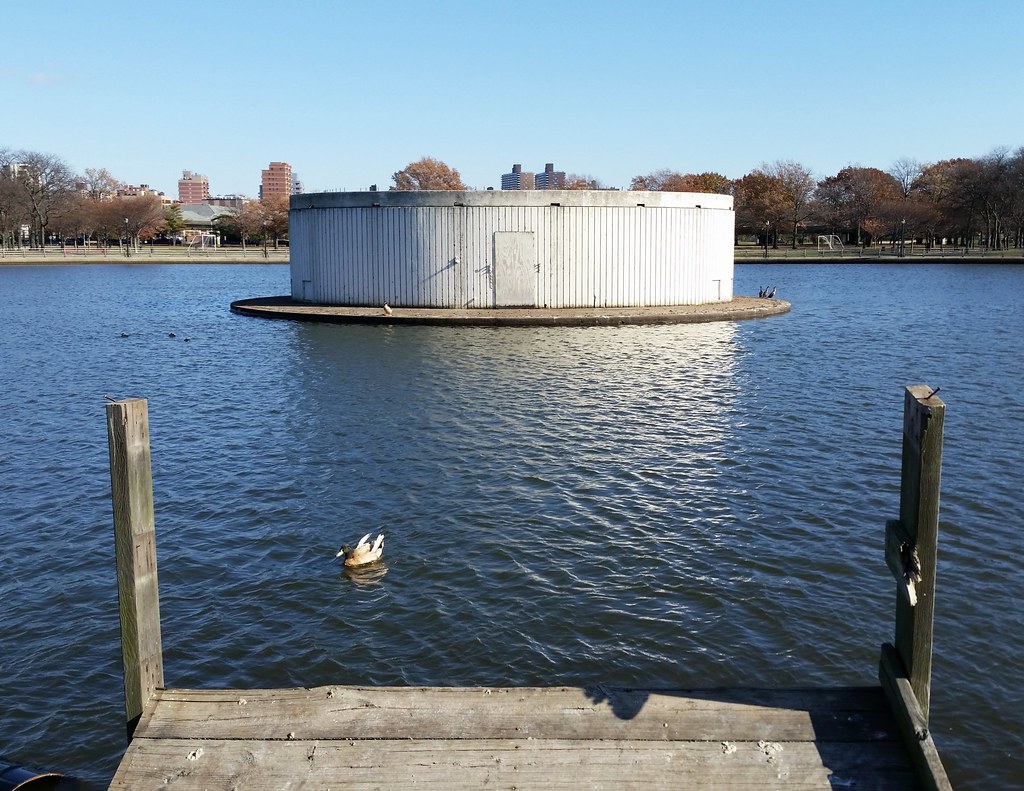
During the 1939-40 World's Fair here in Flushing Meadows, this was the site of the Lagoon of Nations, which was basically an enclosed pool built on the Flushing River (aerial views from 1938 and 1940). The lagoon contained a massive fountain and featured a spectacular nightly show of water, flames, fireworks, light, and music (video) that was described by the president of the fair as "a Niagara plus a Vesuvius". For the 1964-65 World's Fair, the adjacent sections of the river were buried to create more exhibition space, and what had been the Lagoon of Nations was expanded into the Pool of Industry. The round structure inside the pool, above, was part of the Fountain of the Planets, which was billed as the world's largest fountain. Like its predecessor from the 1939-40 fair, the fountain put on a dazzling show each night, its towering jets of water reaching as high as 150 feet.
Sometime around the early 1990s, during his reign as parks commissioner, the eternally wacky Henry Stern decided to change the name of the defunct Fountain of the Planets to "Fountain of the Planet of the Apes". About a year later, someone — this guy claims it was him — complained about the name change to the Queens borough president, and the original name was restored. Mr. Stern then turned his sights on two smaller pools in the park. He named one of them "Fountain of the Planet of the Apes" (photo) and the other "Fountain of the Grapes of Wrath" (long mislabeled on some official park maps as the even zanier "Fountain of the Planet of the Grapes of Wrath", an error mentioned, weirdly enough, in this young-adult novel). According to Mr. Stern: "We thought since we were paying tribute to a motion picture with an animal title, we should pay tribute to a motion picture with a vegetable title." Sounds reasonable to me!
Over the past decade or so, the Pool of Industry — much maligned these days as a stagnant, smelly garbage receptacle (though it seemed perfectly pleasant when I walked by) — has faced a few different threats to its survival. There have been proposals made to replace it with a whitewater slalom course for the 2012 Summer Olympics (which NYC was vying to host), a football stadium for the New York Jets, and, most recently, a soccer stadium for NYC's new MLS team. Those plans are all off the table now, but a long-range Parks Department plan from 2008 that involves turning the pool into a grassy "waterfront festival site" could still be in the works, I suppose.
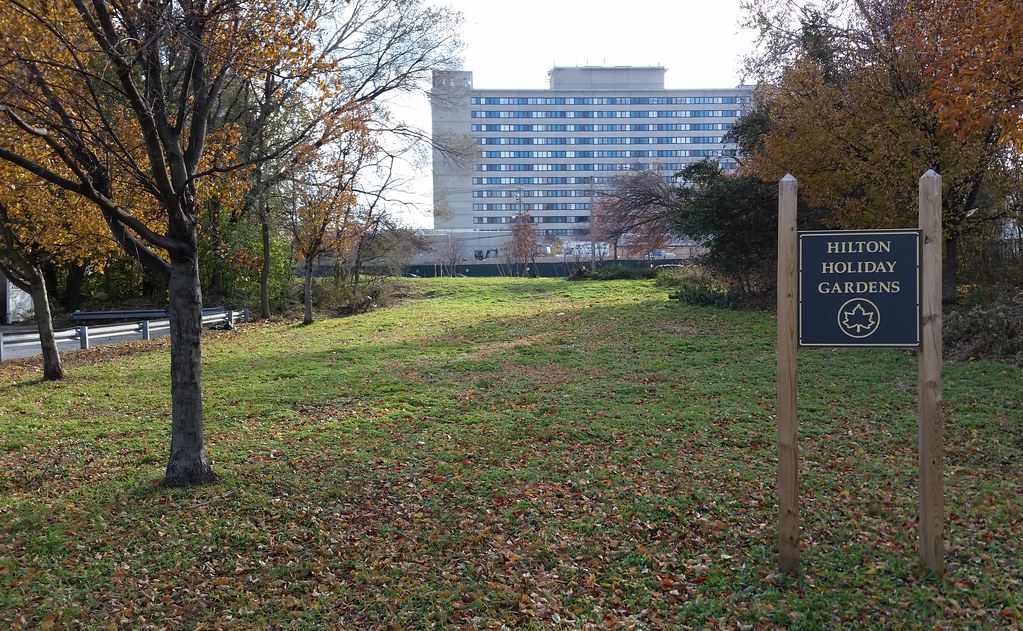
How did this little park near JFK Airport get its name? Well, if an NYC park has a strange name, there's a good chance that Henry Stern is the man who thought it up. For some time during Mr. Stern's reign as city parks commissioner (which ended in early 2002), the hotel in the background of this photo was a Holiday Inn, and there was a Hilton two blocks away. I'd guess that Mr. Stern just combined the names of the two nearby hotels and tacked on "Gardens" at the end for good measure.
It so happens that the former Holiday Inn (after first being rebranded as the International JFK Airport Hotel) became a Hilton in February 2012, but I doubt that had anything to do with how the park got its name, as Mr. Stern was no longer commissioner at that point. (It's hard to tell for sure in this Street View image, but it looks like the park already had a "Hilton Holiday Gardens" sign in 2007, when the hotel was still a Holiday Inn.) There's also now a Hilton Garden Inn located about half a mile away, but I think that's just a coincidence as well: the building was constructed between 2003 and 2005, after Mr. Stern's tenure.
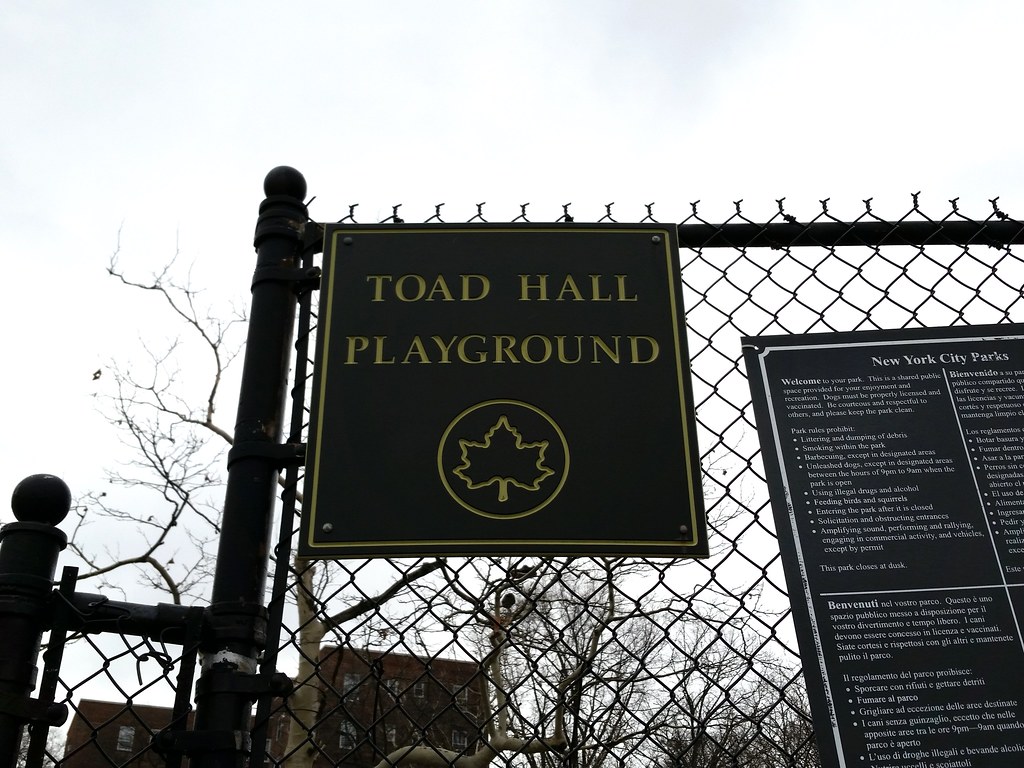
Next to the Todt Hill Houses, we find Toad Hall Playground — hmm, I wonder who came up with that name...
From the Parks Department's website:
The playground was initially called Todt Hill Houses Playground, emphasizing its link to the housing project and the neighborhood. Commissioner Stern renamed it Toad Hall Playground in 1997, echoing both the former name and the place in Kenneth Graeme’s 1908 children’s classic The Wind in the Willows. This book chronicles the adventures of four friends - Toad, Mole, Rat, and Badger - who live along a river in the English countryside. . . . The Wind in the Willows has been a popular bedtime story for generations of children worldwide.Mr. Stern loved to unleash his powers of free association on the nomenclature of the city's park system, but his efforts apparently ruffled some feathers in this case. According to a commenter on a photo essay about the Todt Hill Houses:
There is an ongoing issue which is the Todt Hill Playground was re-named Toad Hall Playground which many of us who lived there were very upset. I have spoken to the Borough’s office and were told that is was changed because the new name represents an old English background. what this has to do with the Todt Hill Houses is nothing more then someone’s ego to make changes that they were not a part of.
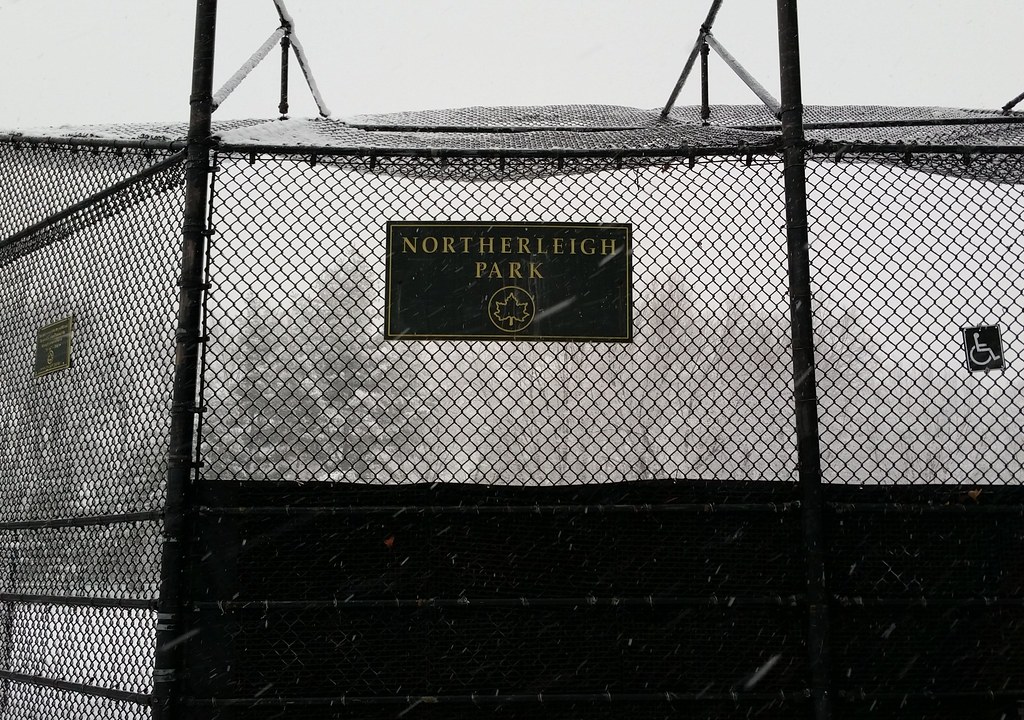
I think it goes without saying that this park, located in the northerly part of the neighborhood of Westerleigh, had its playful name bestowed upon it by Henry Stern.
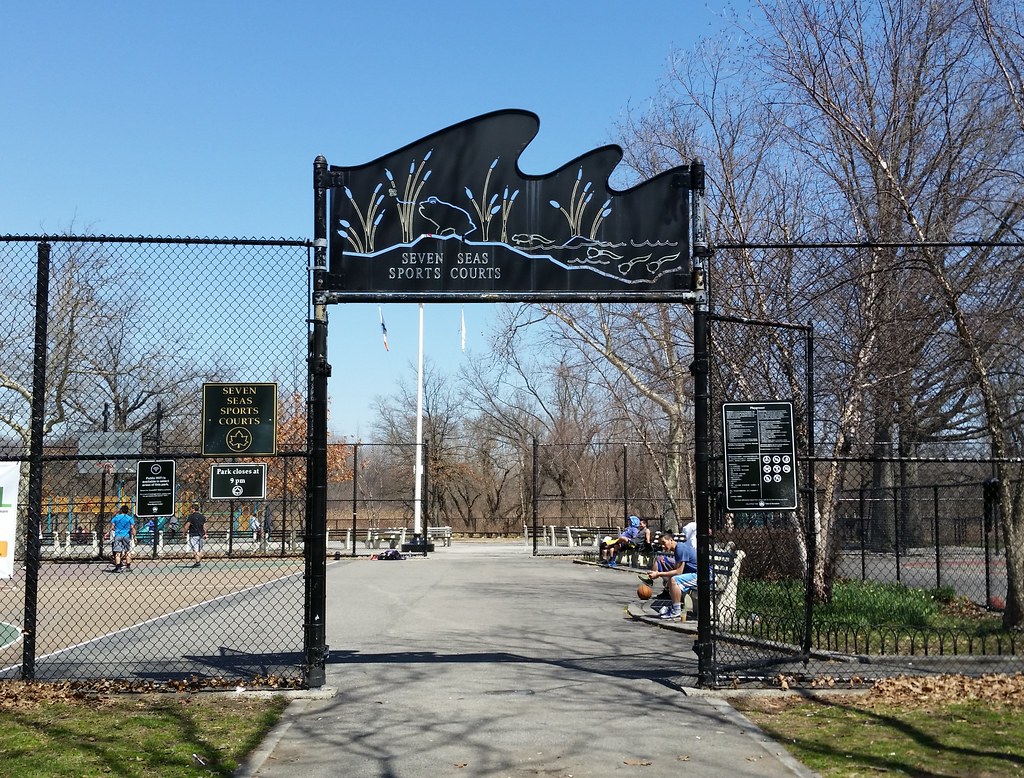
You ask where I live
Here's the address I give
The four winds and the seven seas
I didn't see any signs indicating this, but the playground that contains the Seven Seas Sports Courts is apparently called Four Winds Playground. Henry Stern's fingerprints are all over this place, from the unusual names (that are likely a reference to an old song — wouldn't be the first time) to the animal art above the entrance.
I don't know why Mr. Stern would have picked these names for this place in particular; perhaps they're just a general nod to the international character of Queens.
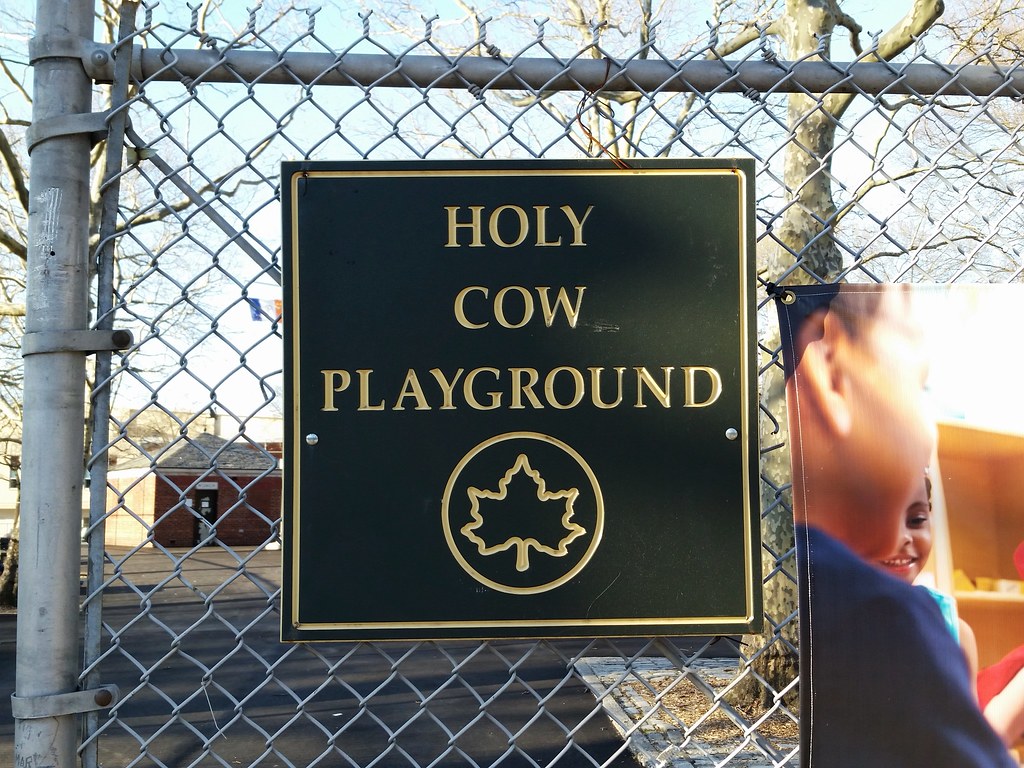
The name of this playground, which was bestowed upon it during — obviously — Henry Stern's reign as Parks commissioner, pays tribute to Phil Rizzuto and his well-known catch phrase. This is now the second Parks property we've seen named for the former Yankee shortstop. The first was Richmond Hill's Phil "Scooter" Rizzuto Park, the center of New York's avian speed-singing scene.

This little triangle of parkland takes its name from Samuel Butler's 1872 novel Erewhon: or, Over the Range. According to the Encyclopædia Britannica, Butler's imaginary land of Erewhon
at first seems utopian in its disregard for money—which lends status but has no purchasing value—and machines—which have been outlawed as dangerous competitors in the struggle for existence. Erewhon has also declared disease a crime for which the sick are imprisoned, and crime is considered a disease for which criminals are sent to the hospital. As the unnamed narrator further examines the institutions of Erewhon, his illusions of utopia and eternal progress are stripped away.You may be wondering what connection this sparsely planted wedge of concrete could possibly have to Erewhon. I've learned that a good first step in trying to decipher a park name is to look at a map, because former Parks Commissioner Henry Stern often used the names of adjacent streets as inspiration for park names. And that appears to be exactly what he did here, as the street on the west side of Erewhon Mall is Utopia Parkway. In an article titled "Erewhon and the End of Utopian Humanism" in the journal ELH, Sue Zemka says that Erewhon was
written with Sir Thomas More's Utopia in mind. More combined two words to coin his seminal neologism: "eutopos," which means the good place, and "outopos," the place which is nowhere. "Erewhon" is "nowhere" misspelled backwards, the soft vowel beginning of "eutopia" thus recalled in a word which, like "utopia," also inscribes its negation.
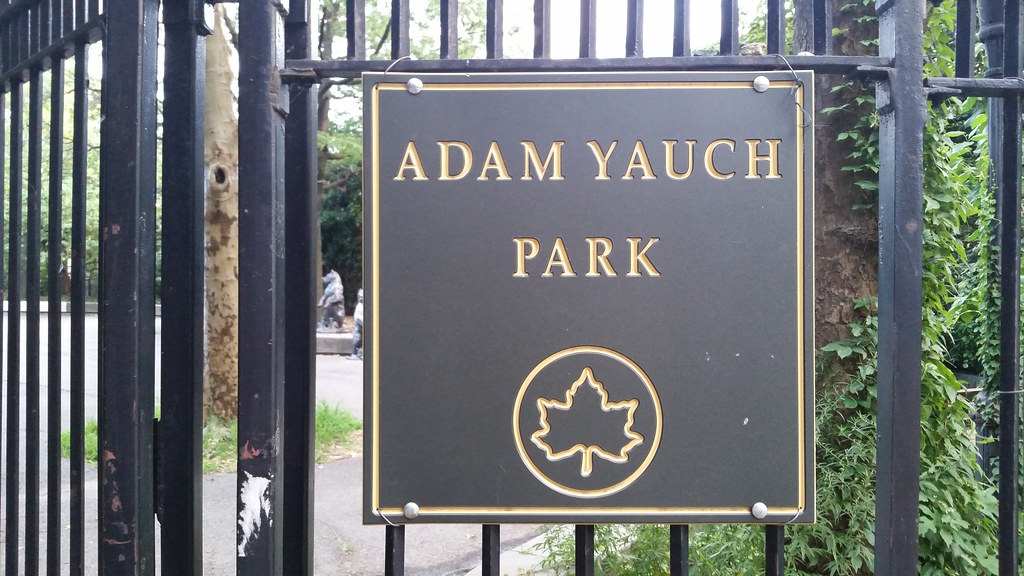
A year after his death, this park was renamed for the late, great member of the Beastie Boys, who grew up playing here. The park's seemingly mundane former name, Palmetto Playground, was actually one of Henry Stern's strangest appellative concoctions. As told by the Parks Department:
Palmetto Playground’s nomenclature was inspired by the names of the surrounding streets: Atlantic Avenue, Columbia Place, and State Street. Columbia is the capitol of South Carolina, an Atlantic state, and the state tree is the Cabbage Palmetto, hence, Palmetto Playground.(There is at least one trace of Mr. Stern's personality still remaining in the park, however: those dancing bear statues in the background.)


